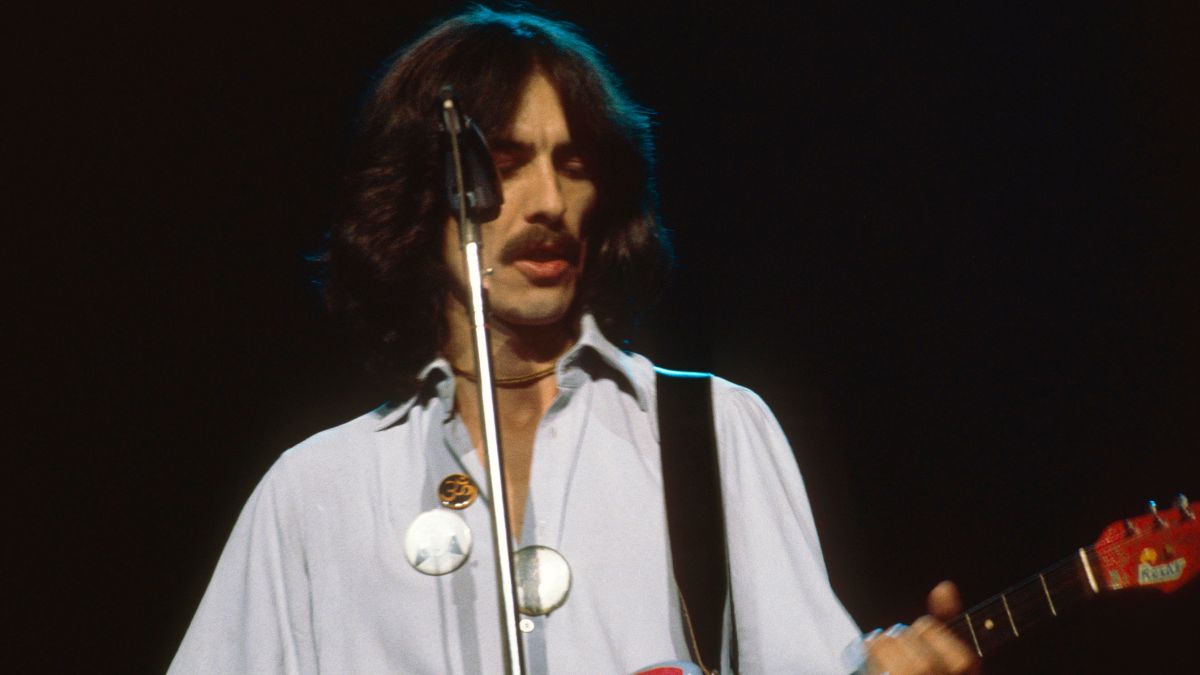“I immediately picked up the guitar and went, ‘B*stards! — why didn’t I write that?’” How Chris Martin channeled Neil Young to write Coldplay’s chart-busting hit “Yellow” (and even made a fan out of Oasis guitarist Noel Gallagher)
Coldplay were in a make-or-break situation when Martin came up with their first major hit during downtime in the studio
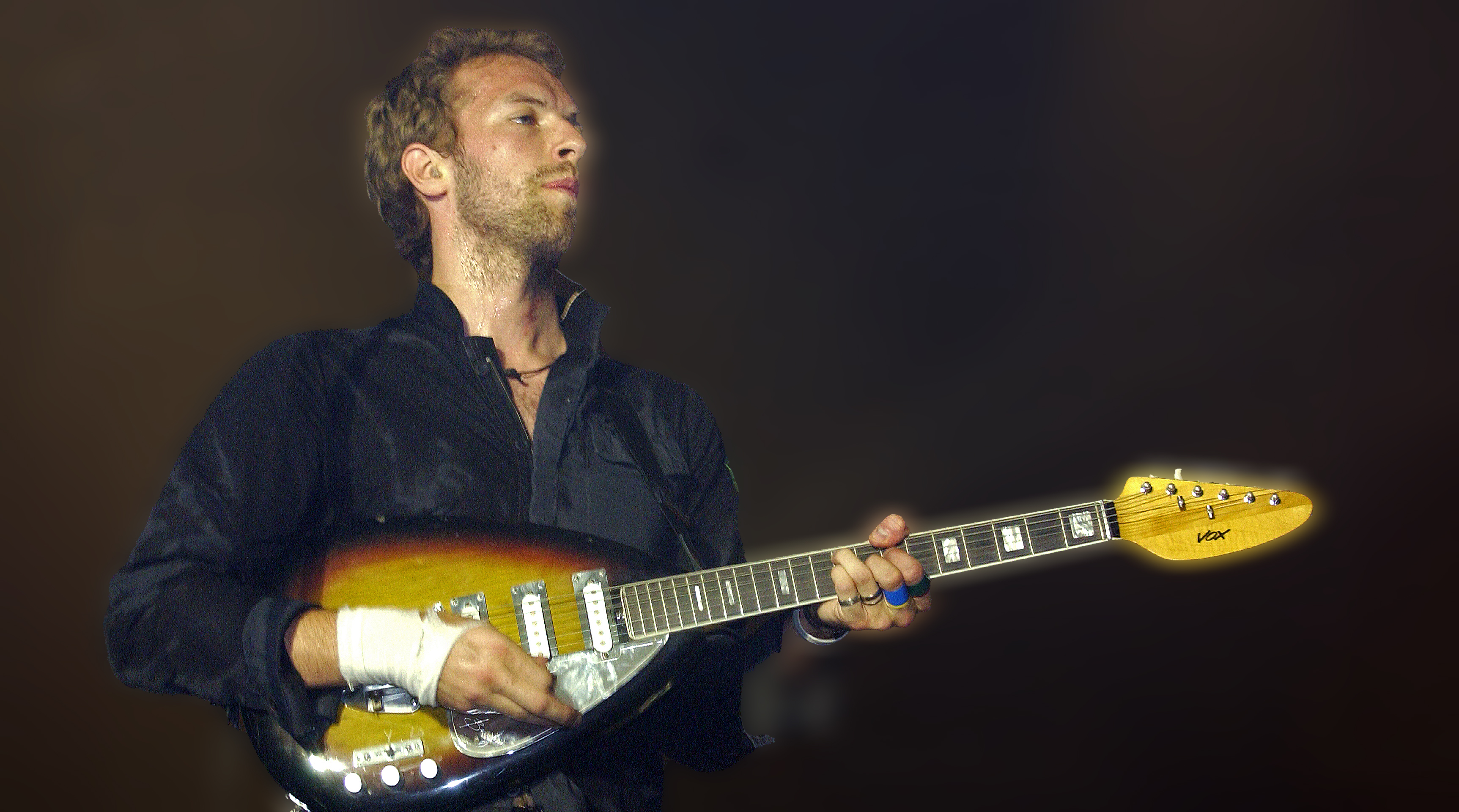
By 1997, Britpop was all but dead. Its final heartbeat came when Oasis, the veritable leaders of the genre, released their highly anticipated Be Here Now that year to initially strong reviews and sales. Unfortunately, the album wasn't the big "statement" needed to carry the movement forward.
Soon after, critics, record buyers and even Oasis guitarist Noel Gallagher had a few choice words to say about the effort. Britpop died a sudden death, leaving the void to be filled by the likes of the Spice Girls.
So it was quite a surprise when an unknown band called Coldplay became a major player in the post-Britpop scene. They burst out of nowhere in 2000 with their debut album, Parachutes, earning rave reviews and building a huge international audience.
And the song that put them over? A tune they wrote during downtime in the studio, called "Yellow."
It was so good, it even made a fan of the notoriously hypercritical Gallagher.
"When I heard 'Yellow' for the first time, I immediately picked up the guitar and went, 'Fucking bastards, why didn't I write that?’” the guitarist told Pitchfork in 2011.
"I feel that way about a lot of their songs."
All the latest guitar news, interviews, lessons, reviews, deals and more, direct to your inbox!
Gallagher was far from alone in his sentiments. Today, the song has been streamed on Spotify more than three billion times.
But "Yellow" would never have come into being if Coldplay hadn't stepped outside of the studio for a break one night.
The song didn’t exist when the band checked into Rockfield Studios, in Wales, to cut Parachutes in November 1999. For that matter, neither did any sort of significant following for the British rock group, which had formed in London just two years earlier.
Despite landing a recording contract in fairly short order, Coldplay had a slow start of finding an audience. Nothing came of their first independently released EP, Safety, but its followup extended-play, The Blue Room, issued through Parlophone, earned them critical praise, paving the way for their first album.
But from the beginning, the effort was strained.
“We’d done one session a few months before in London,” frontman/guitarist Chris Martin says, “which hadn’t gone so well. So we were going there" — to Rockfield — “‘cause it was kind of a make-or-break session.”
Dan Keeling, the former A&R man who signed Coldplay to Parlophone, said the early problems on Parachutes arose out of Martin’s drive to be successful, which made him headstrong.
“We’d been in the studio with another producer and they’d fallen out straight away on the first day of pre-production,” Keeling recalled to The Independent in 2020. “The producer and Chris Martin were locking swords. That was going nowhere.”

They would have better luck at Rockfield, a storied studio in the countryside where artists like Oasis, the Stone Roses and Brian Eno had recorded. There they were teamed up with Ken Nelson, a young producer who had worked with Gomez and Badly Drawn Boy.
The sessions were immediately smoother and more productive, and the environment seemed to suit everyone’s creativity.
Which is how “Yellow” came to be.
As Martin explains, the group were taking a break outdoors with Nelson during the recording of the album track “Shiver.” It was nighttime and the sky was filled with stars, which were more visible in the darkened countryside surrounding Rockfield.
"It was so beautiful outside,” Martin says. “All four of us were outside, and Ken, he was like, ‘Look up there, lads! Look at the stars.’
“He literally said, ‘Look at the stars' — which is the first line of that song.”
The words stuck with Martin. Once back inside, he grabbed his acoustic guitar and began spontaneously building the song out of Nelson’s comment. As he recalls, a piece of studio equipment was broken and the band was waiting for it to be fixed, giving him time to work on the tune. He was especially struck by the word “stars” and decided to sing it with an exaggerated “r,” in a high voice he calls an imitation of Neil Young’s.
“I like to use strange tunings on the guitar."
— Chris Martin
“I was thinking about Neil Young, and I started to do a Neil Young impression to try and make everyone giggle,” he told Howard Stern in 2011.
Martin is a fan of alternate tunings, and his acoustic guitar was set in the one he uses for “Shiver,” from low to high, E A B G B D#. While the chords for “Yellow” are, in essence, B, F# and E, Martin’s chord shape — which includes fretting the low E string with his thumb — allowed the top two strings to ring open, creating unusual harmonics within his chords.
“I like to use strange tunings on the guitar,” Martin told Stern. As he explained to the host, he found the first chord, then second and then the third.
“And then the rest just come out.”
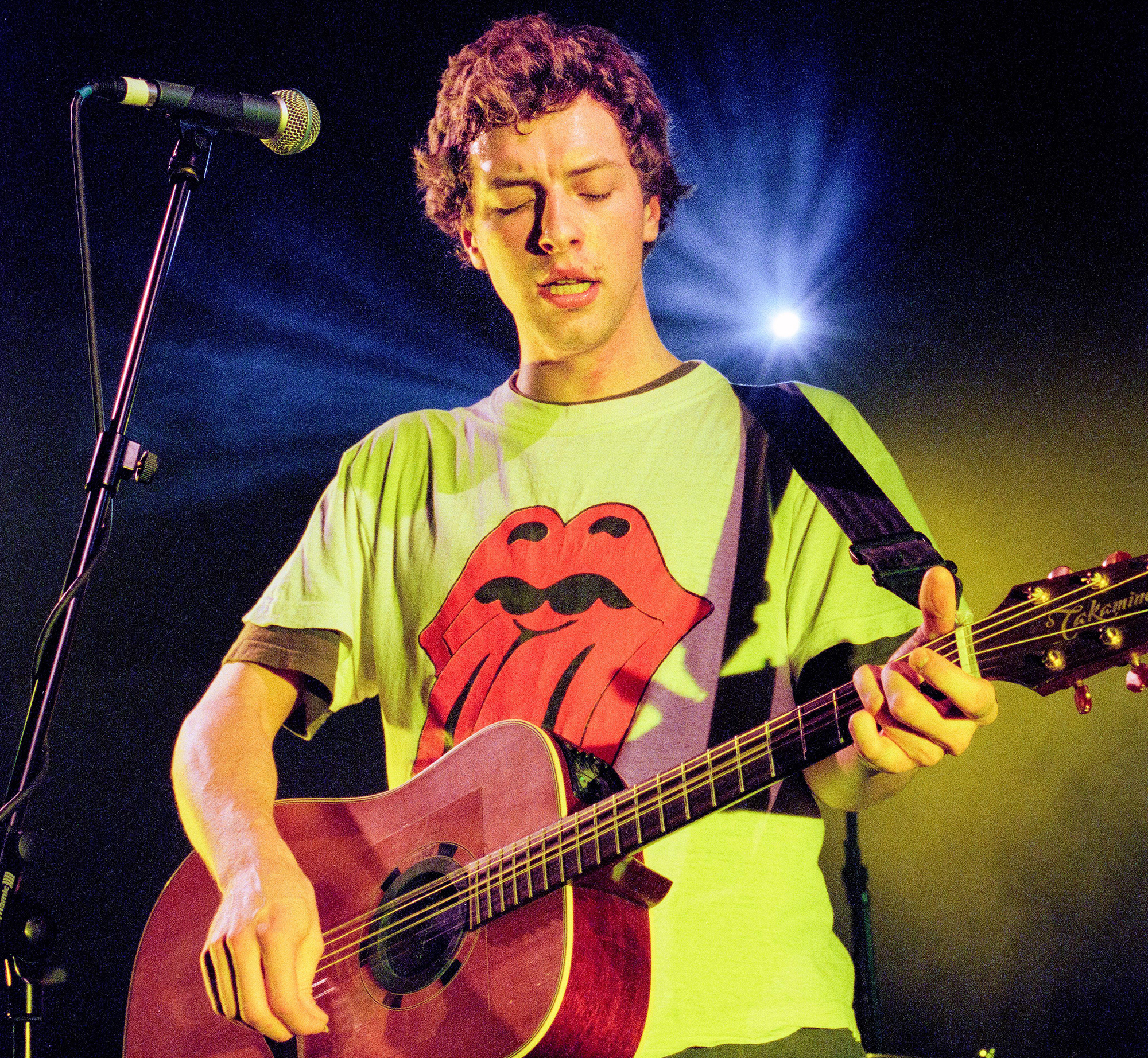
In all, it took Martin just 10 minutes to write nearly the entire song. There was just one word that eluded him.
Although he could hear its sound, it took a while to find something that fit. And then he saw the word literally in front of him.
“I got the title from the Yellow Pages,” he says.
But as easily as the song came to Martin, it proved difficult to record.
"The problem we had with 'Yellow' was getting the tempo just right,” Nelson told Sound on Sound magazine, “because a beat either side of the tempo we picked didn't have the same groove. It lost the feel of it.”
Even their recording medium failed them. Coldplay cut Parachutes to analog tape, but Nelson said the sound wasn’t right for “Yellow.”
“We tried it a few different ways, and a few different recordings of it, and we were never really happy,” he explained. “We ended up using Pro Tools,” although they ultimately transferred that recording to tape, a process the producer says showed him the sonic benefits of combining analog and digital media.
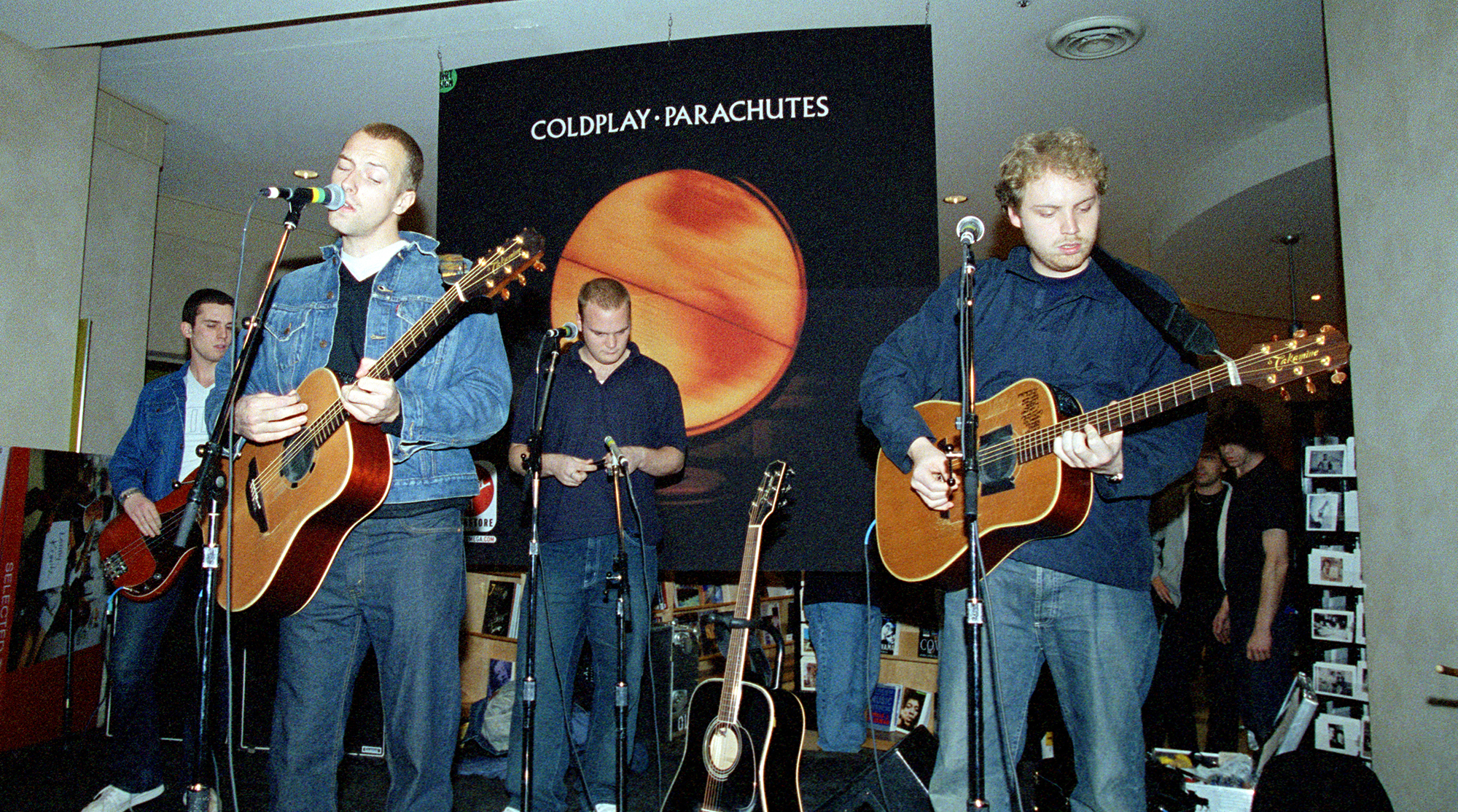
For the recording, Martin played a circa-1996 Vincente Tatay Tomas Spanish acoustic guitar, which he sold at auction in 2015. Guitarist Jonny Buckland played his Fender Classic Series ’72 Telecaster Thinline, a semihollow electric that has been his defining guitar in Coldplay. For amps, he used two Fender Twin Reverb combos.
"Johnny has a Fender Twin Reverb, and he has all these delays going into it, and it was quite a delayed sort of sound,” Nelson told Sound on Sound, “and I was thinking 'How am I going to get around that?' I just wanted to have the option of a bit more dryness.”
His solution was to use Buckland's second Twin Reverb for the dry signal, then balance the dry and wet levels as needed.
"All his effected sounds would come out of one amp, so we'd mic that up, and mic the dry one as well. I think that worked really well — both were used in the mix, and we just balanced it.”
Moreover, the combination of Martin’s acoustic and Buckland’s crunchy electric guitar imbued the song with a sense of light and dark, producing rich, contrasting textures. The result is a track that’s both folk and rock, and dreamy enough to move fans of shoegaze. In short, “Yellow” is a song that can’t be easily categorized.
Which seems appropriate, given that Martin isn’t really sure what it’s about.
“What’s it about? I don’t know,” he says. ”Just someone awesome.”
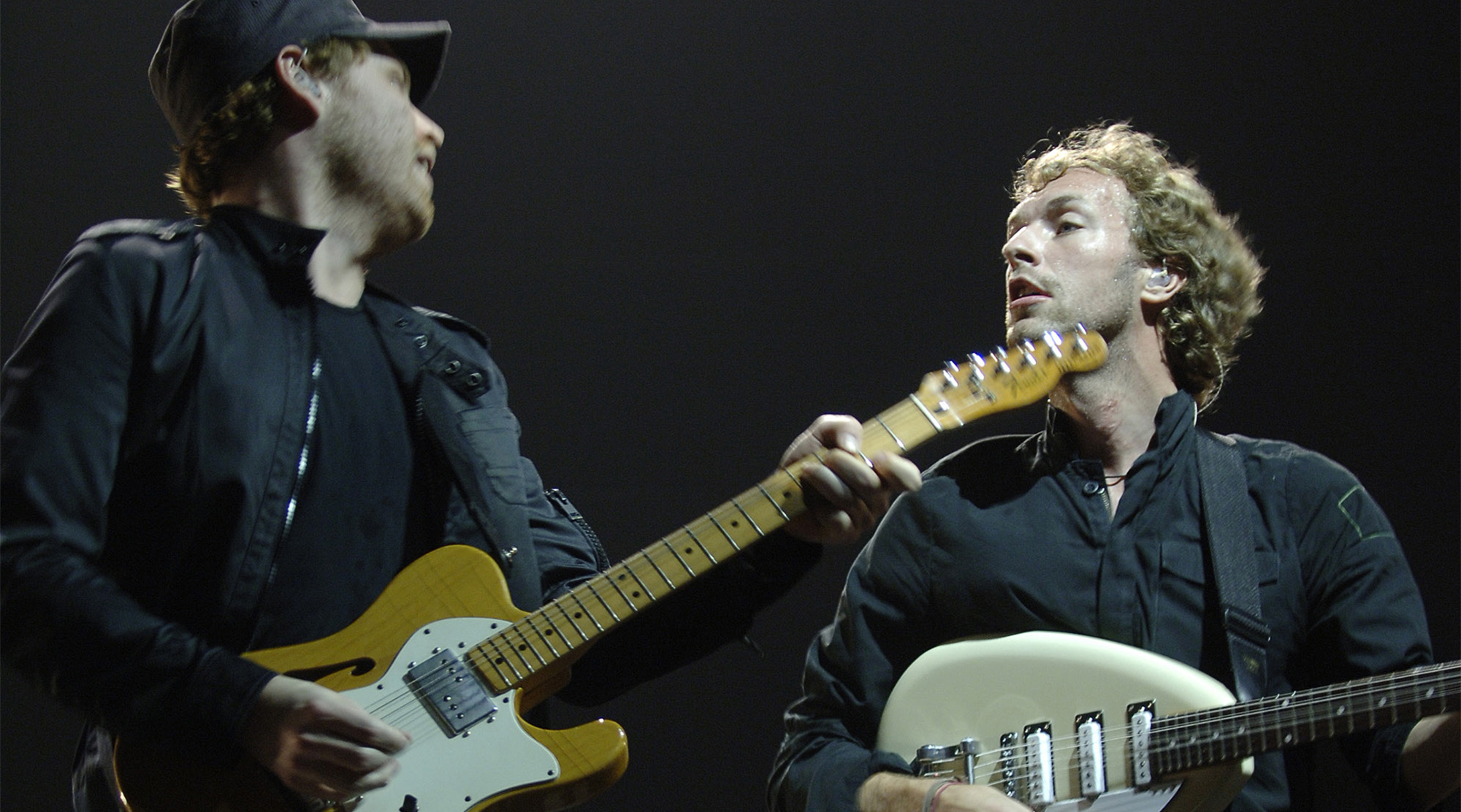
As it happened, “Yellow” wasn’t the first song released from Parachutes. That honor went to “Shiver,” which reached 35 on the U.K. charts after its release in March 2000.
But June brought a double round of success. Coldplay launched their first headlining tour, which included a spot at Glastonbury on June 24. Two days later, they issued the second single from Parachutes: “Yellow.”
It would be the breakthrough they needed.
“I remember hearing that song and thinking, ‘That sounds like a hit,’” Keeling told The Independent. “It’s epic but at the same time it’s not. It’s pared back and natural. I remember feeling the sky was the limit.”
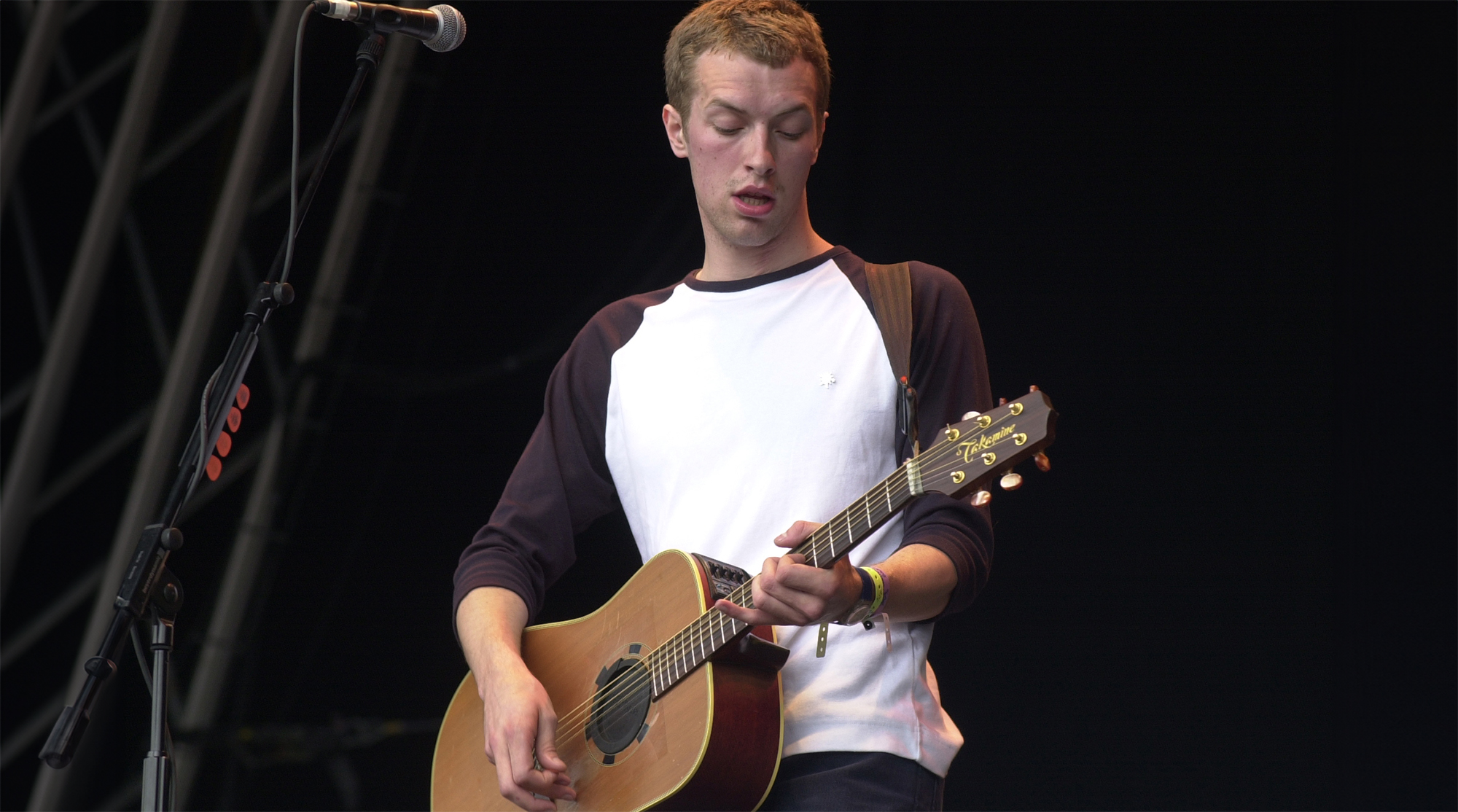
Indeed it was. “Yellow” went to number four on the U.K. Singles Chart. Better still, the song became an international hit, reaching number nine in Ireland, five in Australia and one in Iceland. Impressively, it cracked deep into the tough U.S. market, where it went to 48, earning Coldplay much needed attention in America.
Twenty-five years on, “Yellow” hasn’t lost its charms. The song continues to be a favorite in international markets. Its use in the 2018 movie Crazy Rich Asians, where it was performed in Mandarin Chinese by singer Katherine Ho, gave the song a massive resurgence in China that has barely abated.
And while Coldplay has made countless performances of the tune over the years, the most memorable may have been at the 2011 memorial for Apple founder Steve Jobs. Before starting, Martin revealed to the attendees that Coldplay had performed “Yellow” for him in 2001.
“We played this song for Steve 10 years ago, and he said it was shit,” Martin said, grinning, as the crowd laughed. “He said, we’d never make it.”
Undoubtedly, Jobs, like Gallagher, would have eventually come around.
Elizabeth Swann is a devoted follower of prog-folk and has reported on the scene from far-flung places around the globe for Prog, Wired and Popular Mechanics She treasures her collection of rare live Bert Jansch and John Renbourn reel-to-reel recordings and souvenir teaspoons collected from her travels through the Appalachians. When she’s not leaning over her Stella 12-string acoustic, she’s probably bent over her workbench with a soldering iron, modding gear.


